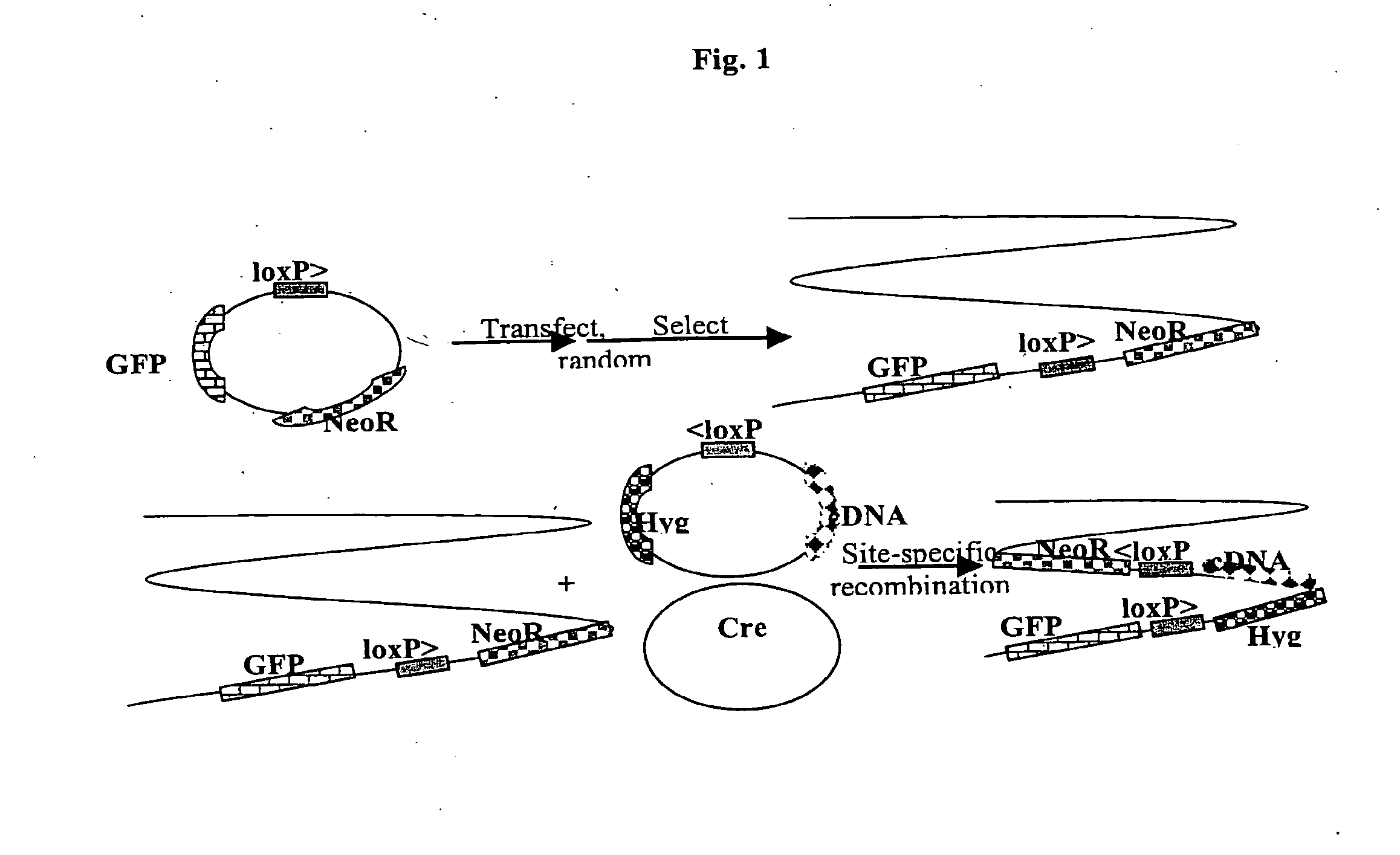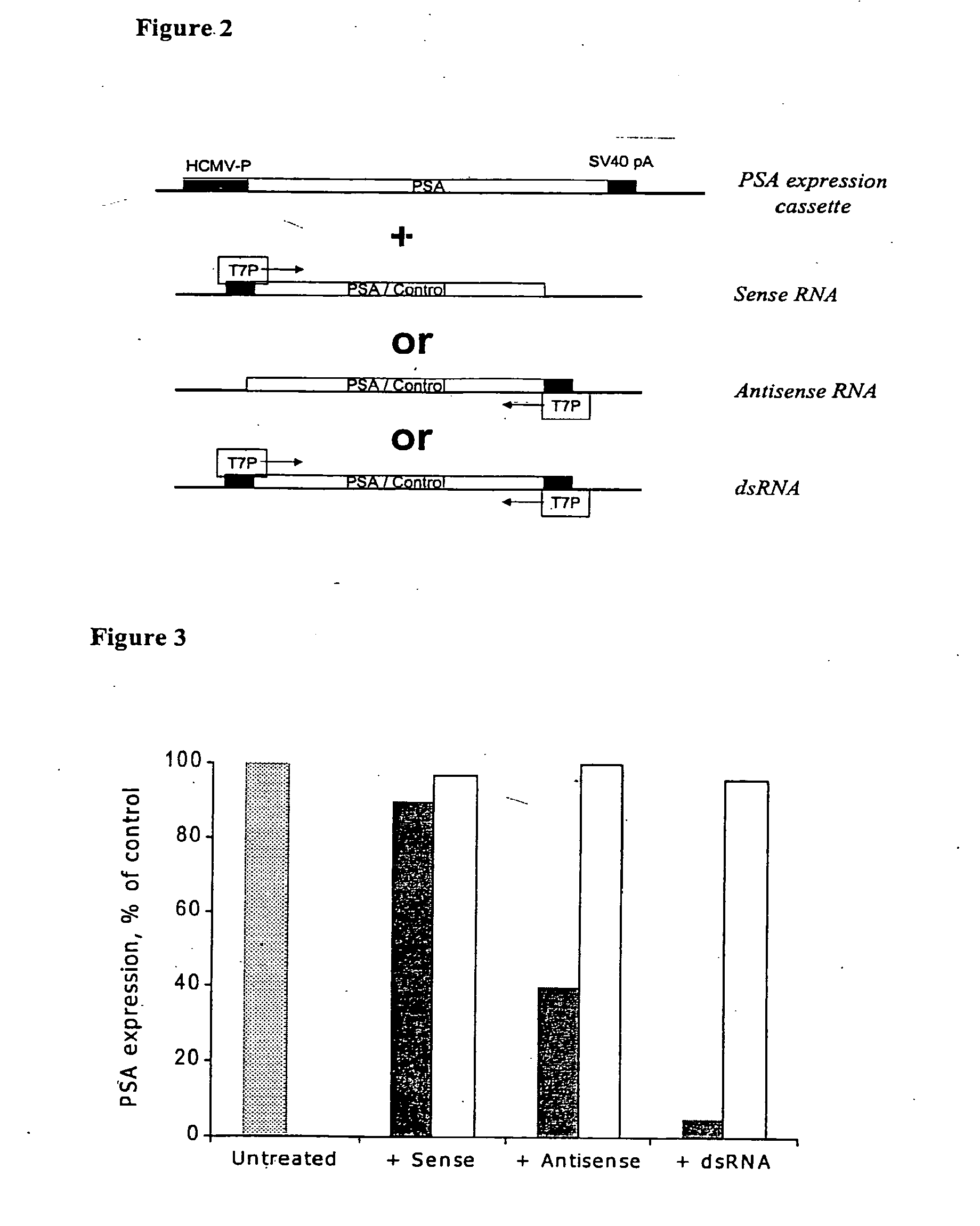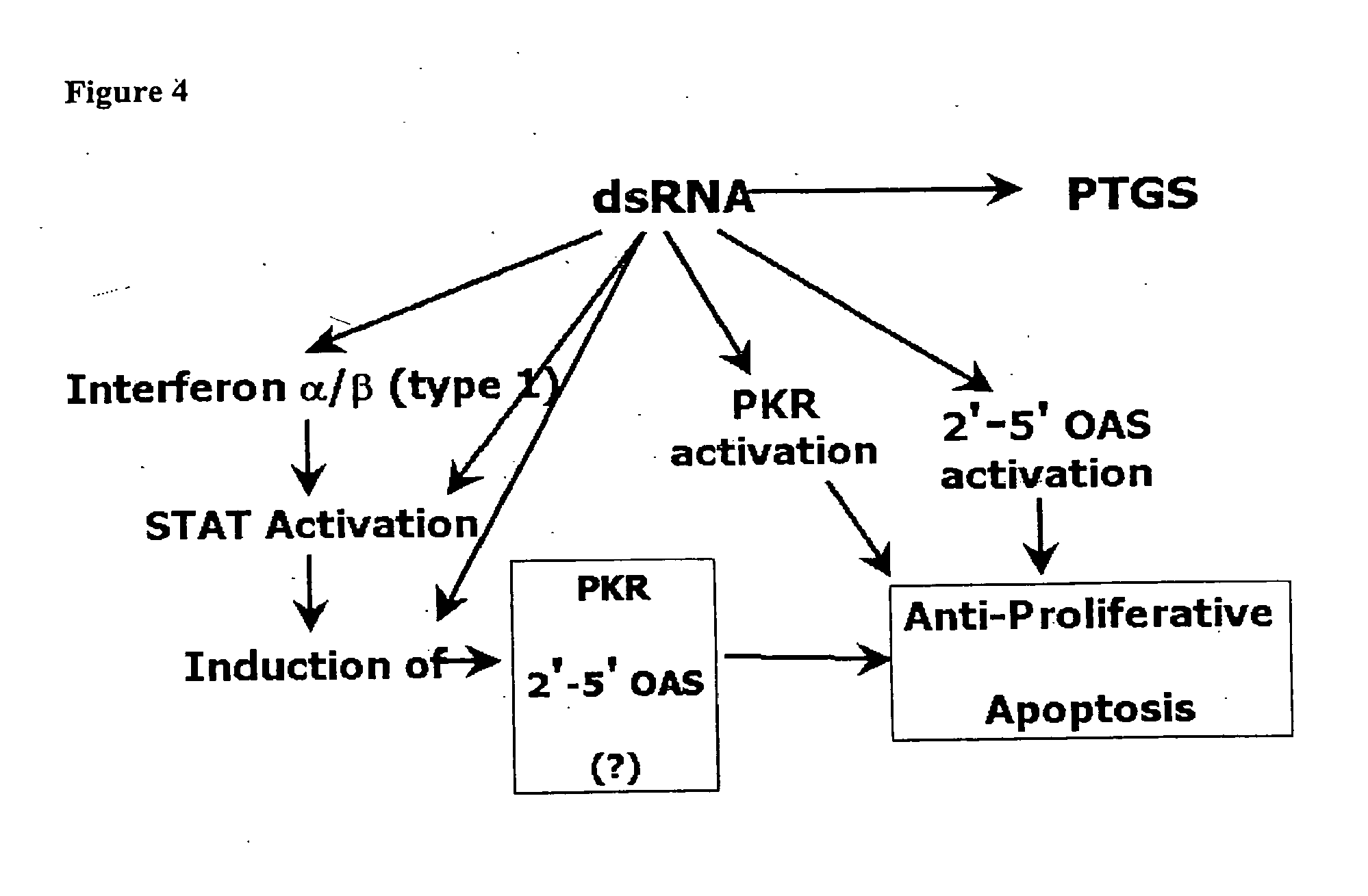Use of post-transcriptional gene silencing for identifying nucleic acid sequences that modulate the function of a cell
a nucleic acid sequence and post-transcriptional technology, applied in the field of identifying nucleic acid sequences that modulate the function of cells, can solve the problems that dsrna can interfere with the expression of genes in mouse embryos, and achieve the effects of high throughput identification, rapid identification, and increased half-life of double stranded rna
- Summary
- Abstract
- Description
- Claims
- Application Information
AI Technical Summary
Benefits of technology
Problems solved by technology
Method used
Image
Examples
example 1
Design and Delivery of Vectors for Intracellular Synthesis of dsRNA for Library Based Screening Approaches to Nucleic Acid Identification Using PTGS
[0114]PTGS is induced when dsRNA is made intracellularly. The library based screening approaches to nucleic acid identification through PTGS may require that dsRNA reside in certain cellular compartments in order to exert its effect. Therefore, expression plasmids that transcribe dsRNA in the cytoplasm and in the nucleus are utilized. There are two classes of nuclear transcription vectors: one that is designed to express polyadenylated dsRNA (for example, a vector containing an RNA polymerase II promoter and a poly A site) and one that expresses non-adenylated dsRNA (for example, a vector containing an RNA polymerase II promoter and no poly A site, or a vector containing a T7 promoter). Different cellular distributions are predicted for the two species of RNA; both vectors are transcribed in the nucleus, but the ultimate destinations of ...
example 2
Generation of Templates for In Vitro Transcription of dsRNA for Non-Library Based Approaches for Identification of Nucleic Acids Using PTGS
[0130]Nucleic acid sequences that modulate cell function, gene expression in a cell, or the biological activity of a target polypeptide in a cell may also be identified using non-library based approaches involving PTGS. A single known nucleic acid sequence encoding a polypeptide with unknown function or a single nucleic acid fragment of unknown sequence and / or function can be made into a double stranded RNA molecule. This dsRNA is then transfected into a desired cell type and assayed for modulations in cell function, gene expression in the cell, or the biological activity of a target polypeptide in the cell, using methods described herein. A modulation in cell function, gene expression in the cell, or the biological activity of a target polypeptide in the cell identifies the nucleic acid of the dsRNA as a nucleic acid the modulates the specific c...
example 3
In Vitro RNA Transcription and RNA Analysis
[0135]In vitro transcription reactions are carried out using the Riboprobe Kit (Promega Corp.), according to the manufacturer's directions. The template DNA is as described above. Following synthesis, the RNA is treated with RQ1 DNase (Promega Corp.) to remove template DNA. The RNA is then treated with Proteinase K and extracted with phenol-chloroform to remove contaminating RNases. The RNA is ethanol precipitated, washed with 70% ethanol, and resuspended in RNase-free water. Aliquots of RNA are removed for analysis and the RNA solution is flash frozen by incubating in an ethanol-dry ice bath. The RNA is stored at −80° C.
[0136]As an alternative to phenol-chloroform extraction, RNA can be purified in the absence of phenol using standard methods such as those described by Li et al. (WO 00 / 44914, filed Jan. 28, 2000). Alternatively, RNA that is extracted with phenol and / or chloroform can be purified to reduce or eliminate the amount of phenol ...
PUM
| Property | Measurement | Unit |
|---|---|---|
| concentration | aaaaa | aaaaa |
| concentrations | aaaaa | aaaaa |
| time | aaaaa | aaaaa |
Abstract
Description
Claims
Application Information
 Login to View More
Login to View More - R&D
- Intellectual Property
- Life Sciences
- Materials
- Tech Scout
- Unparalleled Data Quality
- Higher Quality Content
- 60% Fewer Hallucinations
Browse by: Latest US Patents, China's latest patents, Technical Efficacy Thesaurus, Application Domain, Technology Topic, Popular Technical Reports.
© 2025 PatSnap. All rights reserved.Legal|Privacy policy|Modern Slavery Act Transparency Statement|Sitemap|About US| Contact US: help@patsnap.com



